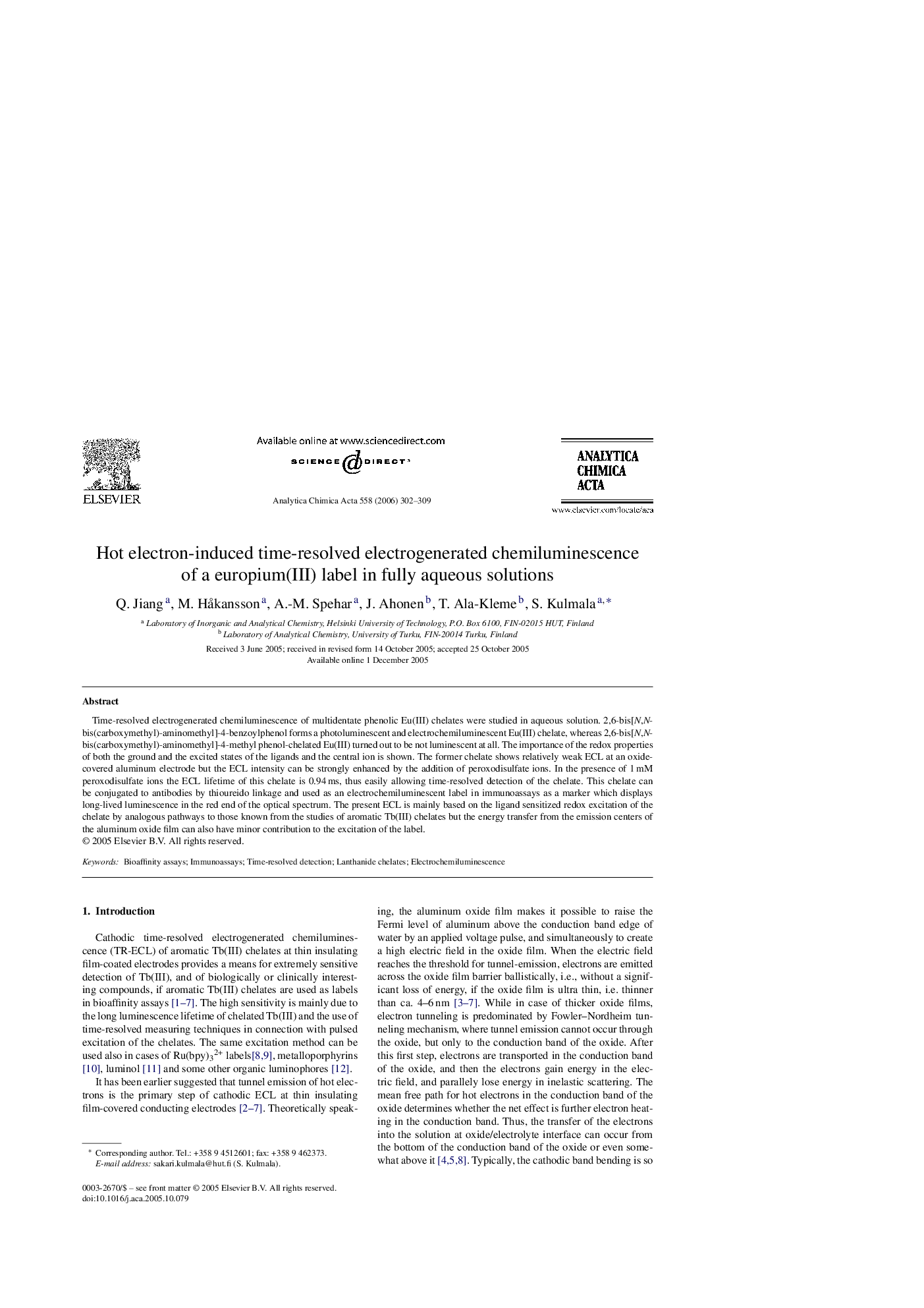| Article ID | Journal | Published Year | Pages | File Type |
|---|---|---|---|---|
| 1172553 | Analytica Chimica Acta | 2006 | 8 Pages |
Time-resolved electrogenerated chemiluminescence of multidentate phenolic Eu(III) chelates were studied in aqueous solution. 2,6-bis[N,N-bis(carboxymethyl)-aminomethyl]-4-benzoylphenol forms a photoluminescent and electrochemiluminescent Eu(III) chelate, whereas 2,6-bis[N,N-bis(carboxymethyl)-aminomethyl]-4-methyl phenol-chelated Eu(III) turned out to be not luminescent at all. The importance of the redox properties of both the ground and the excited states of the ligands and the central ion is shown. The former chelate shows relatively weak ECL at an oxide-covered aluminum electrode but the ECL intensity can be strongly enhanced by the addition of peroxodisulfate ions. In the presence of 1 mM peroxodisulfate ions the ECL lifetime of this chelate is 0.94 ms, thus easily allowing time-resolved detection of the chelate. This chelate can be conjugated to antibodies by thioureido linkage and used as an electrochemiluminescent label in immunoassays as a marker which displays long-lived luminescence in the red end of the optical spectrum. The present ECL is mainly based on the ligand sensitized redox excitation of the chelate by analogous pathways to those known from the studies of aromatic Tb(III) chelates but the energy transfer from the emission centers of the aluminum oxide film can also have minor contribution to the excitation of the label.
